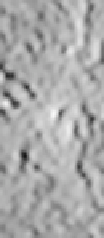Graphics Reference
In-Depth Information
Fig. 5.12
(
a
) Definition of a shadow line.
Left
: Image used for shape from shading analysis.
Mid-
dle
: Image used for shadow analysis.
Right
: Binarised ratio image (shadow shown in
white
), the
arrow indicating shadow line
s
ranging from
u
(s)
i
to
u
(s)
e
.(
b
) Illustration of the adjustment factor
c
t
defined in (
5.7
)
shadow analysis is used to select a consistent solution of the shape from shading
reconstruction algorithm. As a second step, an additional error term derived from
the fine structure of the shadow is incorporated into the reconstruction algorithm.
This approach is extended to the analysis of two or more shadows under different
illumination conditions, leading to an appropriate initialisation of the shape from
shading algorithm.
5.2.1 Selection of a Shape from Shading Solution Based on
Shadow Analysis
This section introduces a self-consistent fusion scheme that combines the shape
from shading approach based on a single light source (cf. Sect.
3.2
) with the result
of shadow analysis. Two images of the scene are registered at subpixel accuracy
such that a pixel at position
(u, v)
corresponds to the same surface point in both
images (Gottesfeld Brown,
1992
). One of the images, called the shading image, is
essentially shadow-free, while the other one shows one or several shadow areas and
is therefore termed the shadow image. The shadow pixels are segmented either by
binarisation of the shadow image itself with a suitable threshold or by binarisation of
the ratio image. The latter approach is insensitive to albedo variations on the surface
and is therefore used throughout this section and in the applications regarded in
Chaps.
6
and
8
.
According to Fig.
5.12
a, the shadow is regarded as being composed of a number
of
S
shadow lines. Shadow line
s
begins at pixel position
(u
(s)
i
,v
(s)
)
and ends at po-
sition
(u
(s
e
,v
(s)
)
with
u
(s)
u
(s
e
. The information about depth differences derived
from the shadow is quite accurate, but it is available only for a small fraction of pix-
els. The depth information derived from shape from shading is dense, but it strongly
≤
i













































Search WWH ::

Custom Search